Anaphylaxis and the Bee
Though the season is coming to an end, with the high temperatures remaining consistent, there is something we need to keep in mind before we burry ourselves in our casual heavy knit scarves.
There are still bees among us.
For a lot of people, this isn’t an issue. Swat here, swerve there. Go about their day.
For others, however, it can lead into a panic.
Should a sting occur, most people exhibit mild symptoms, which can be treated at home. To know if you have mild symptoms, check the list below:
• Pain or itching where you were stung.
• A white spot where the stinger went in.
• Slight swelling and redness.
Now that you’ve checked that it’s mild, here are some at home treatment tips:
• Remove the stinger with a credit card. Avoid using tweezers, as this could potentially break the venom sac.
• Clean the area with soap and water.
• Apply ice or a cold compress to relieve the pain and swelling.
• Apply a cream, like hydrocortisone, to relieve the redness and itching.
• Take an over the count allergy pill, like Benadryl.
Worried you might be severely allergic, but you’ve never had a sting? Know that you are allergic, but forget the symptoms? Check the list below to see if you have or have had a severe reaction:
• You start getting itchy patches all over your skin, not just the area that you were stung (hives).
• Flushed or pale skin.
• Swelling in the face, throat, lips.
• Difficulty breathing or swallowing.
• Headache, dizziness, or fainting.
• Nausea or vomiting.
• Abdominal cramping.
• Diarrhea.
• Decrease in blood pressure.
• Weak or rapid heart rate.
• Loss of consciousness.
If you’re feeling anxious about the above list, make sure to talk to your family doctor, or talk to family members to see if you have a history of bee allergies.
So, what about anaphylaxis?
Anaphylaxis is a severe reaction to venom, medication or food. Signs of anaphylaxis can include:
• Confusion.
• Coughing.
• Trouble breathing.
• Wheezing.
• Rash.
• Facial swelling.
• Swelling in the mouth and throat.
• Slurred speech.
• Difficulty swallowing.
• Anxiety.
• Abdominal pain.
• Itchy skin.
• Nausea.
• Shock
If you or someone around you is experiencing symptoms of anaphylaxis, call 911.
If you encounter someone having an episode of anaphylactic shock, you may be familiar with the term “epi-pen”. An epi-pen is a brand name for an auto-injectable device that delivers the drug epinephrine. A life saving medication when someone is experiencing a severe allergic reaction. Steps you can take after you’ve called 911 and are waiting for the paramedics are:
• Check their airways and breathingo Begin CPR if necessary.
• Remove anything that could restrict breathing such as jewelry or clothing.
• Administer an epi-pen, should they have one.
• Keep the person warm and comfortable.
• Roll the person into shock position.
o Lay them on their back.
o Elevate the feet 12 inches above the ground. This helps direct blood to their vital organs.
o Keep them warm by covering them with extra clothing or a blanket.
o Check on their heart rate and breathing for changes until help arrives.
This may be your first time holding an epi-pen, or maybe it’s been a while, and you want a refresh. No fear, we’ve got you covered!
• Remove the auto-injector from it’s clear carrier tube.
• Using your dominant hand, grip the barrel of the auto-injector so that the orange tip points downward.
o Make sure your hand is high enough that your fingers don’t touch the auto-injector
• Using your other hand, pull straight up and remove the blue safety release. Do not pull sideways, twist or bend!
• Inject the orange tip of the auto-injector into the middle part of their upper thigh. Push until it makes a clicking noise.
• How the epi-pen in place for 3 Mississippi seconds before removing it from their thigh.
• Gently massage the area with your fingers for about 10 seconds.
• If not done already, call 911.
Remember this little rhyme if you’re having a hard time knowing which way the epi-pen should be, orange to the thigh, blue to the sky.
This may all be overwhelming for you. It can be scary to find yourself in a situation where a friend, family member, or stranger suffers from a severe allergic reaction. Even worse if you realized you are the one with the serious reaction.
Don’t worry! There are steps you can take to ensure you are equipped should you be presented with a bee sting. Check out our first aid packages and book your class today!


